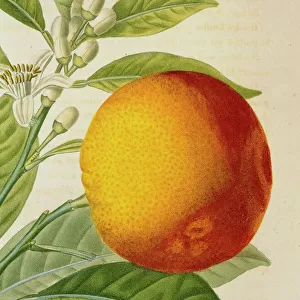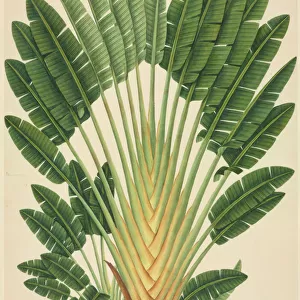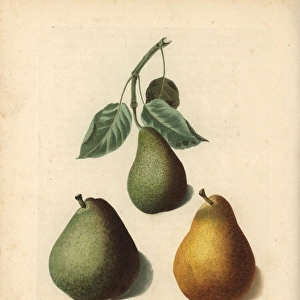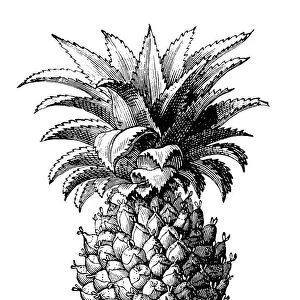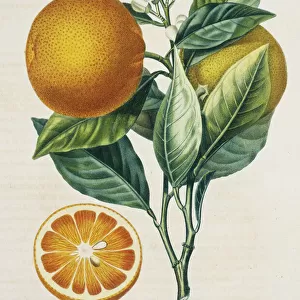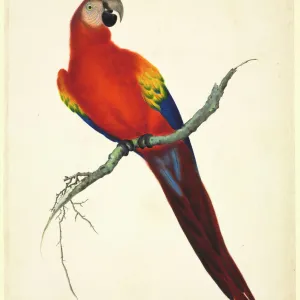Mespilus sp. azerole-pear
![]()

Wall Art and Photo Gifts from Mary Evans Picture Library
Mespilus sp. azerole-pear
Illustration from Pomona Franconica (1776-1801) by Johann Mayer of Wurzburg. Entitled Azerole-poire
Mary Evans Picture Library makes available wonderful images created for people to enjoy over the centuries
Media ID 8591787
© Mary Evans Picture Library 2015 - https://copyrighthub.org/s0/hub1/creation/maryevans/MaryEvansPictureID/10708597
1804 Azerole Pear Crataegus Eudicot Eurosid Fabidae Hawthorn Johan Mayer Johann Mayer Medlar Mespilus Pear Pomona Franconica Angiospermae Dicot Dicotyledon Magnoliophyta
EDITORS COMMENTS
This exquisite illustration is taken from Pomona Franconica, a horticultural treatise published between 1776 and 1801 by the renowned German botanical artist, Johann Mayer of Wurzburg. Entitled "Azerole-poire" or "Mespilus sp. Azarole-pear," this illustration showcases the intricate details of both the flower and the fruit of this fascinating plant. Mespilus, also known as the common medlar or azerole, is a species of flowering plant in the family Rosaceae, specifically the subfamily Crataegoideae. It is an angiosperm, a type of seed-bearing plant that produces enclosed seeds, and is classified as a eudicot, a group of dicotyledonous plants characterized by the presence of two seed leaves. The plant depicted in this illustration is adorned with delicate, white, five-petaled flowers, each with a yellow center. The fruit, which is shown in various stages of ripening, is unique in its appearance and texture. It begins as a hard, inedible fruit that turns soft and sweet once it has been exposed to frost. This process, known as "blebbing," allows the fruit to develop its characteristic sweet and aromatic flavor. Mespilus sp. is native to Europe, North Africa, and western Asia, and has been cultivated for its fruit since ancient times. It is a popular ornamental plant and is also used in traditional medicine for its anti-inflammatory and antioxidant properties. This stunning illustration not only showcases the beauty of the Azerole-pear but also provides a glimpse into the intricacies of botanical art during the 19th century. The meticulous attention to detail and the use of naturalistic colors make this a true masterpiece of botanical illustration.
MADE IN THE USA
Safe Shipping with 30 Day Money Back Guarantee
FREE PERSONALISATION*
We are proud to offer a range of customisation features including Personalised Captions, Color Filters and Picture Zoom Tools
SECURE PAYMENTS
We happily accept a wide range of payment options so you can pay for the things you need in the way that is most convenient for you
* Options may vary by product and licensing agreement. Zoomed Pictures can be adjusted in the Cart.


